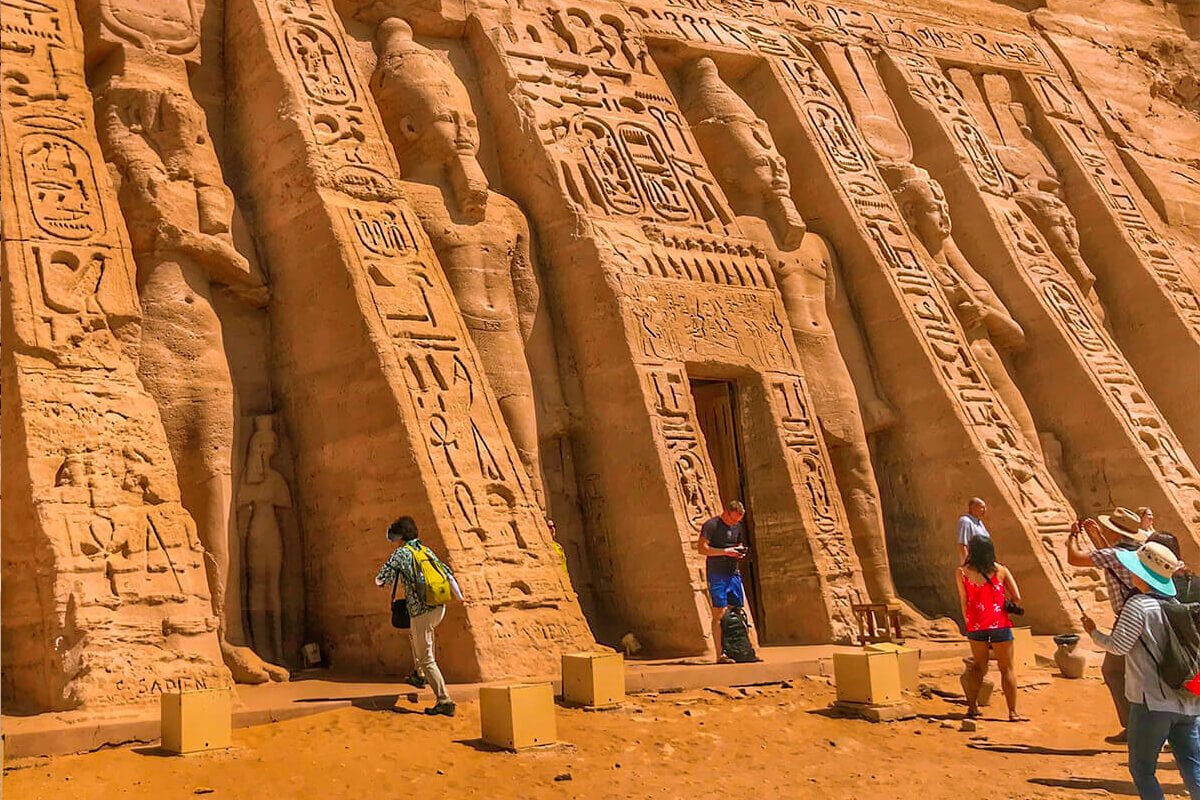The Abu Simbel temples are among Egypt’s most astonishing monuments, not only for their grandeur but also for the incredible feat of engineering that saved them from being lost forever. These magnificent temples, built by Pharaoh Ramses II in the 13th century BC, were relocated in the 1960s to avoid submersion under the rising waters of Lake Nasser. Today, they stand as a testament to both ancient and modern engineering brilliance.
The History of Abu Simbel
The twin temples of Abu Simbel were carved into a mountainside along the banks of the Nile in Nubia. Dedicated to the gods Amun, Ra-Horakhty, and Ptah, the larger temple honors Ramses II himself, while the smaller temple is dedicated to his beloved wife, Queen Nefertari.
Built to commemorate Ramses II’s victory at the Battle of Kadesh and to impress both his subjects and Egypt’s southern neighbors, Abu Simbel was designed to showcase his divine status and military power. The four colossal statues of Ramses II guarding the entrance stand at an imposing height of 20 meters (66 feet), ensuring that all who approached would be reminded of his greatness.
The Great Relocation: A Modern Engineering Marvel
In the 1960s, the construction of the Aswan High Dam threatened to submerge Abu Simbel under the waters of Lake Nasser. Recognizing the cultural and historical significance of these temples, UNESCO launched one of the most ambitious archaeological rescue missions in history.
The temples were carefully cut into massive blocks, each weighing up to 30 tons, and reassembled on higher ground, 65 meters above their original location. The relocation project, which took four years (1964-1968) and involved experts from around the world, preserved the temples in their entirety and ensured that future generations could continue to marvel at their beauty.
Exploring the Temples of Abu Simbel
1. The Great Temple of Ramses II
- The temple’s most striking feature is its four colossal statues of Ramses II seated on his throne, gazing eternally over the desert.
- The interior is adorned with intricate carvings and hieroglyphs depicting Ramses II’s military victories, including the Battle of Kadesh.
- The temple is designed so that, twice a year (on February 22 and October 22), sunlight illuminates the statues inside the sanctuary, an astronomical alignment that adds to its mystery.
2. The Temple of Queen Nefertari
- Dedicated to Ramses II’s favorite wife, Queen Nefertari, this temple is a rare example of an ancient Egyptian monument honoring a queen alongside a pharaoh.
- The facade features six statues, four of Ramses II and two of Nefertari, an exceptional representation of royal equality in ancient Egypt.
- Inside, stunning reliefs depict Nefertari making offerings to the gods, showcasing her divine status.
What Makes Abu Simbel Unique?
- Sun Festival Phenomenon: The precise alignment of the Great Temple allows sunlight to illuminate the inner sanctum twice a year, celebrating Ramses II’s birthday and coronation.
- Symbol of Egypt’s Engineering Prowess: The successful relocation of Abu Simbel remains one of the greatest archaeological achievements of the 20th century.
- Breathtaking Desert Landscape: The temples are set against the stunning backdrop of the Nubian desert, offering an awe-inspiring view of both history and nature.
Tips for Visiting Abu Simbel
- Best Time to Visit: The cooler months between October and April provide the most comfortable experience.
- Getting There: Abu Simbel is accessible by flight from Aswan, or by road with an early morning drive through the desert.
- Sun Festival Experience: If you plan your visit around February 22 or October 22, you can witness the magical moment when sunlight illuminates the temple’s inner sanctuary.
- Stay Hydrated: Bring plenty of water, as temperatures can be extreme, especially in summer.
- Hire a Guide: A knowledgeable guide can provide deeper insights into the temple’s history and significance.

